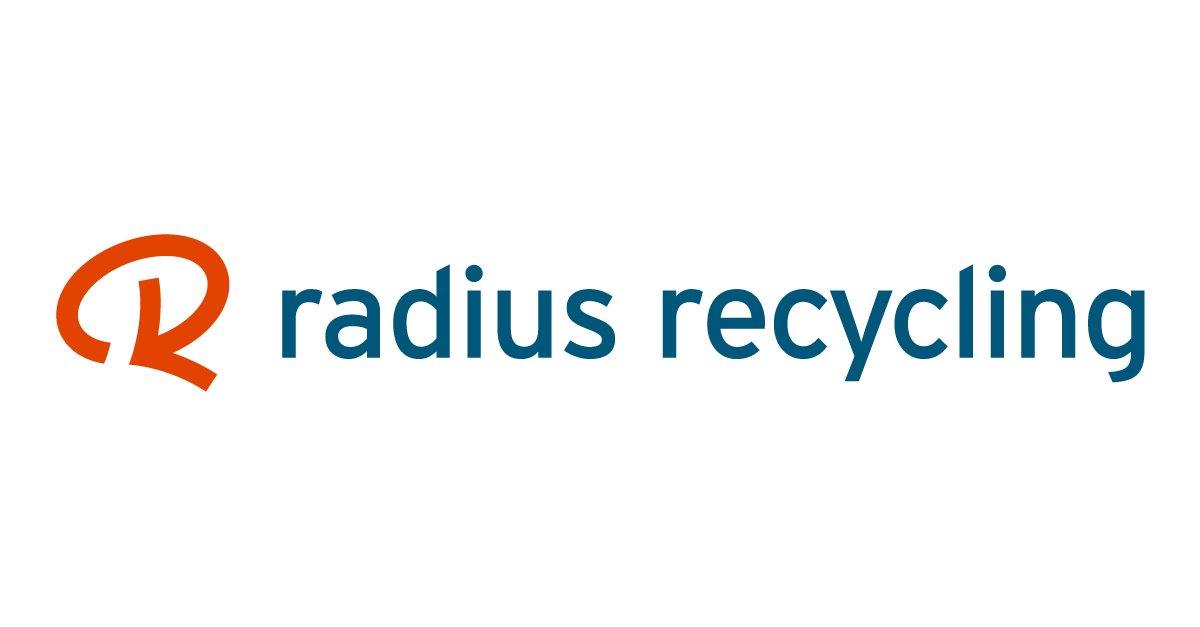Schnitzer Steel Rebrands as Radius Recycling to Reflect Company’s Vision, Purpose, and Impact on Circular Economy
Schnitzer Steel Rebrands as Radius Recycling to Reflect Company's Vision, Purpose, and Impact on Circular Economy Business Wire


Schnitzer Steel Industries Rebrands as Radius Recycling to Reflect Commitment to Sustainable Development Goals

PORTLAND, Ore.–(BUSINESS WIRE)–Schnitzer Steel Industries, Inc. (NASDAQ: SCHN) today unveiled its new corporate name and identity, Radius Recycling, as part of a rebranding initiative to reflect the Company’s vision, purpose, and impact on the global economy.
Embracing the Sustainable Development Goals
For more than a century, the Company has developed robust networks to collect, process, and deliver recycled metals to customers around the world. As the global economy accelerates its shift toward low carbon technologies, the demand for these metals has grown significantly. Electric vehicles and renewable energy systems, widely acknowledged as crucial components of a sustainable future, require more metals compared to the technologies they are replacing.
As Radius Recycling, the Company’s new identity will better align with its role as one of the largest metal recyclers, more closely reflect its position in the circular economy, and further its commitment to advance the recovery, reuse, and recycling of the essential metals required to support global carbon reduction.
Chairman and CEO’s Perspective
“While metals recycling and steel manufacturing have been the foundation of our global business for many decades, our Company’s reach now extends far beyond what the name Schnitzer Steel implies,” explained Chairman and CEO, Tamara Lundgren. “Our growth has been marked by expansion in both scope and scale, and we now operate in over 100 communities across North America. Our work and our purpose have never been more relevant than they are today,” she continued.
Contributing to a Sustainable Future
Through its integrated operating model, the Company annually diverts millions of tons of materials from landfills, delivers recycled metals to domestic and international customers, and produces some of the lowest carbon emissions finished steel products. In addition, the Company’s 3PR Third Party Recycling services increase recycling rates and support the sustainability efforts of hundreds of domestic retailers and manufacturers.
Third Party Recycling services increase recycling rates and support the sustainability efforts of hundreds of domestic retailers and manufacturers.
“Our new identity clearly affirms our vision for a sustainable future,” Lundgren remarked. “Radius Recycling is a name that represents our 3,500 employees, thousands of stakeholders, and a future in which recycled metals sit at the center of progress, seamlessly connecting all points within the circular economy.”
A Name that Reflects Impact
“This is an exciting next step in our Company’s history, with an identity that reflects the essential services we provide to the communities in which we operate and the positive global impact of our products,” said Eric Potashner, Chief Public Affairs and Communications Officer. “While our name will be changing, our Core Values of Safety, Sustainability, and Integrity will continue to serve as the foundation of our culture and will guide us for the next hundred years.”
Recognition for Sustainability Efforts
The Company was listed as one of TIME’s 100 Most Influential Companies of 2023, recognized as the Most Sustainable Company in the World by Corporate Knights in 2023, and has been honored by Ethisphere as one of the World’s Most Ethical Companies® for nine consecutive years.
Future Plans
The Company will change its NASDAQ ticker symbol to RDUS at the start of its next fiscal year in September 2023.
About Radius Recycling
Radius Recycling, formerly known as Schnitzer Steel Industries, Inc., is one of the largest manufacturers and exporters of recycled metal products in North America. With operating facilities located in 25 states, Puerto Rico, and Western Canada, Radius has seven deep water export facilities located on both the East and West Coasts and in Hawaii and Puerto Rico. The Company’s integrated operating platform also includes 50 stores which sell serviceable used auto parts from salvaged vehicles and receive over 4.1 million annual retail visits. The Company’s steel manufacturing operations produce finished steel products, including rebar, wire rod, and other specialty products. Radius began operations in 1906 in Portland, Oregon.
SDGs, Targets, and Indicators
-
SDG 9: Industry, Innovation, and Infrastructure
- Target 9.4: By 2030, upgrade infrastructure and retrofit industries to make them sustainable, with increased resource-use efficiency and greater adoption of clean and environmentally sound technologies and industrial processes.
- Indicator 9.4.1: CO2 emission per unit of value added in manufacturing industries.
-
SDG 11: Sustainable Cities and Communities
- Target 11.6: By 2030, reduce the adverse per capita environmental impact of cities, including by paying special attention to air quality and municipal and other waste management.
- Indicator 11.6.1: Proportion of urban solid waste regularly collected and with adequate final discharge out of total urban solid waste generated, by cities.
-
SDG 12: Responsible Consumption and Production
- Target 12.5: By 2030, substantially reduce waste generation through prevention, reduction, recycling, and reuse.
- Indicator 12.5.1: National recycling rate, tons of material recycled.
-
SDG 13: Climate Action
- Target 13.2: Integrate climate change measures into national policies, strategies, and planning.
- Indicator 13.2.1: Number of countries that have communicated the strengthening of institutional, systemic, and individual capacity-building to implement adaptation, mitigation, and technology transfer.
Table: SDGs, Targets, and Indicators
| SDGs | Targets | Indicators |
|---|---|---|
| SDG 9: Industry, Innovation, and Infrastructure | Target 9.4: By 2030, upgrade infrastructure and retrofit industries to make them sustainable, with increased resource-use efficiency and greater adoption of clean and environmentally sound technologies and industrial processes. | Indicator 9.4.1: CO2 emission per unit of value added in manufacturing industries. |
| SDG 11: Sustainable Cities and Communities | Target 11.6: By 2030, reduce the adverse per capita environmental impact of cities, including by paying special attention to air quality and municipal and other waste management. | Indicator 11.6.1: Proportion of urban solid waste regularly collected and with adequate final discharge out of total urban solid waste generated, by cities. |
| SDG 12: Responsible Consumption and Production | Target 12.5: By 2030, substantially reduce waste generation through prevention, reduction, recycling, and reuse. | Indicator 12.5.1: National recycling rate, tons of material recycled. |
| SDG 13: Climate Action | Target 13.2: Integrate climate change measures into national policies, strategies, and planning. | Indicator 13.2.1: Number of countries that have communicated the strengthening of institutional, systemic, and individual capacity-building to implement adaptation, mitigation, and technology transfer. |
Analysis
1. Which SDGs are addressed or connected to the issues highlighted in the article?
The issues highlighted in the article are connected to the following SDGs:
- SDG 9: Industry, Innovation, and Infrastructure
- SDG 11: Sustainable Cities and Communities
- SDG 12: Responsible Consumption and Production
- SDG 13: Climate Action
2. What specific targets under those SDGs can be identified based on the article’s content?
Based on the article’s content, the specific targets under the identified SDGs are:
- Target 9.4: By 2030, upgrade infrastructure and retrofit industries to make them sustainable, with increased resource-use efficiency and greater adoption of clean and environmentally sound technologies and industrial processes.
- Target 11.6: By 2030, reduce the adverse per capita environmental impact of cities, including by paying special attention to air quality and municipal and other waste management.
- Target 12.5: By 2030, substantially reduce waste generation through prevention, reduction, recycling, and reuse.
- Target 13.2: Integrate climate change measures into national policies, strategies, and planning.
3. Are there any indicators mentioned or implied in the article that can be used to measure progress towards the identified targets?
Yes, there are indicators mentioned or implied in the article that can be used to measure progress towards the identified targets:
- Indicator 9.4.1: CO2 emission per unit of value added in manufacturing industries.
- Indicator 11.6.1: Proportion of urban solid waste regularly collected and with adequate final discharge out of total urban solid waste generated, by cities.
- Indicator 12.5.1: National recycling rate, tons of material recycled.
- Indicator 13.2.1: Number of countries that have communicated the strengthening of institutional, systemic, and individual capacity-building to implement adaptation, mitigation, and technology transfer.
Behold! This splendid article springs forth from the wellspring of knowledge, shaped by a wondrous proprietary AI technology that delved into a vast ocean of data, illuminating the path towards the Sustainable Development Goals. Remember that all rights are reserved by SDG Investors LLC, empowering us to champion progress together.
Source: businesswire.com

Join us, as fellow seekers of change, on a transformative journey at https://sdgtalks.ai/welcome, where you can become a member and actively contribute to shaping a brighter future.







